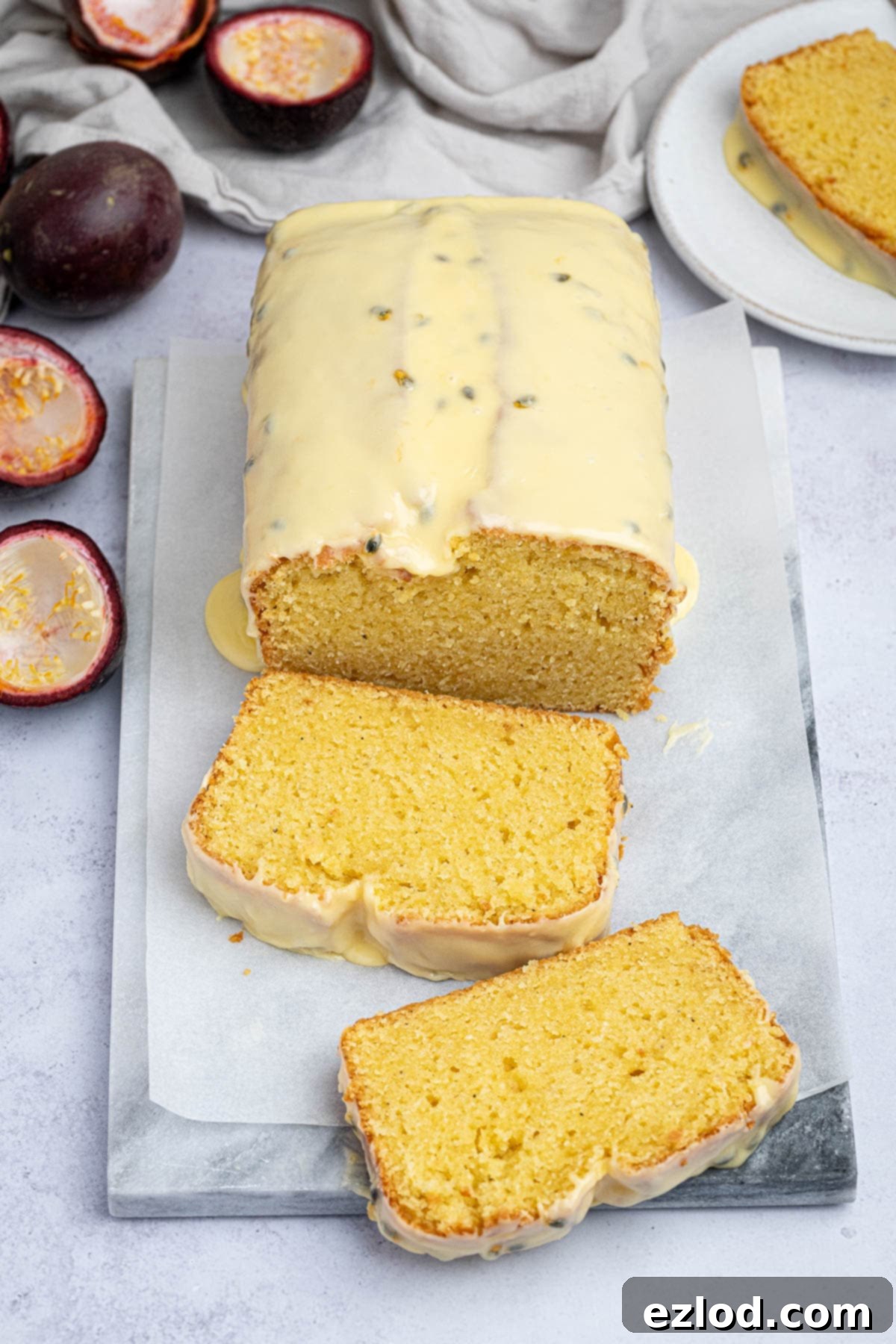Tropical Delight: The Ultimate Vegan Passion Fruit Loaf Cake Recipe
Prepare to be enchanted by this incredible vegan passion fruit loaf cake! It’s exceptionally soft, beautifully moist, and bursting with the vibrant, zingy flavor of fresh, tropical passion fruit. This delightful cake is surprisingly easy to make, making it perfect for an everyday treat or a special dessert. Enjoy it on its own for a satisfying snack, or elevate your experience by serving it alongside a scoop of creamy vegan coconut ice cream.
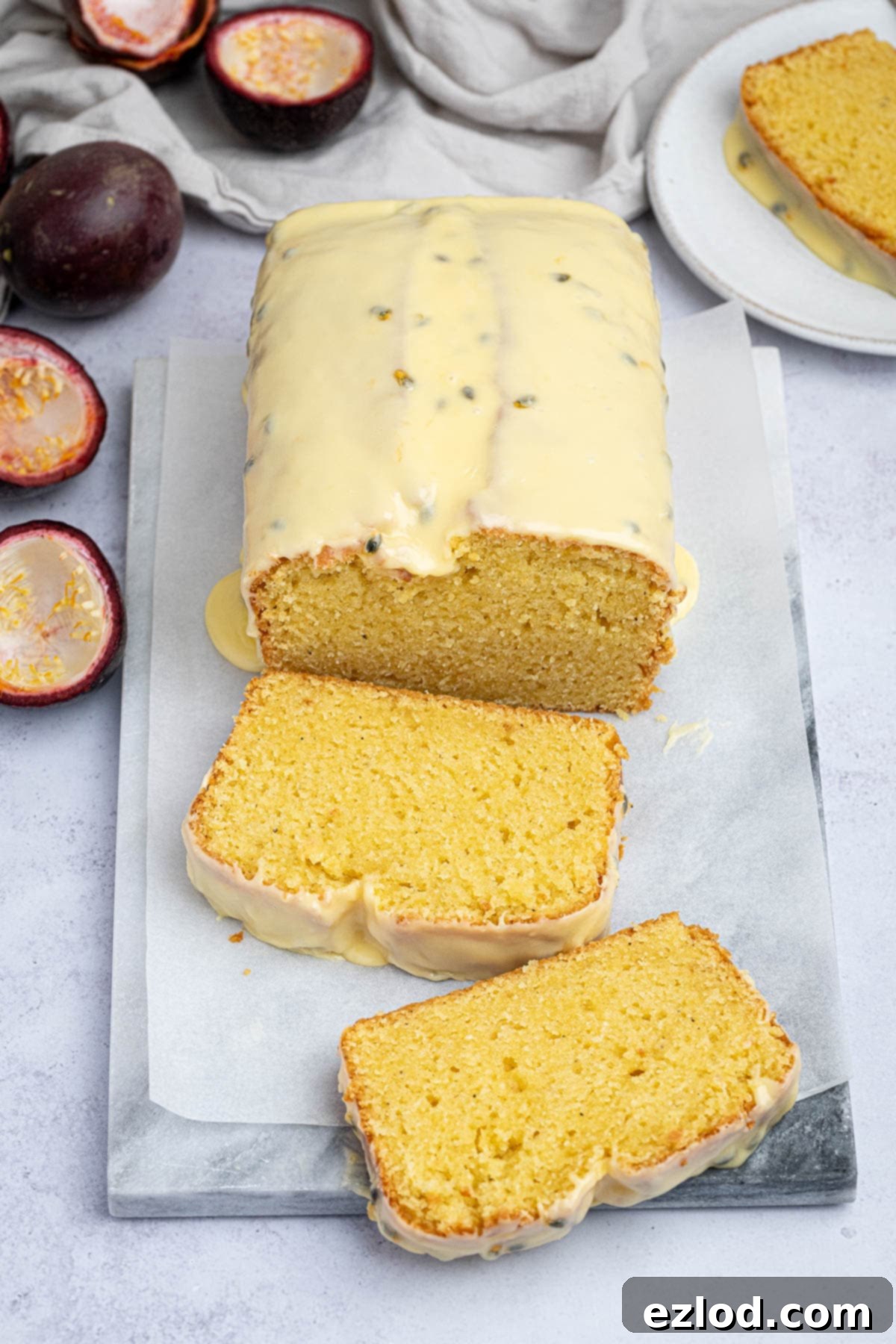
There’s something uniquely comforting and effortlessly elegant about a loaf cake. While elaborate layer cakes certainly have their place for grand celebrations, for daily enjoyment or impromptu gatherings, a well-made loaf cake is simply unbeatable. Its simplicity often belies the depth of flavor and texture it can offer, and this vegan passion fruit loaf cake is a prime example.
This recipe delivers an explosion of sweet, tangy passion fruit flavor in every bite. The cake itself boasts a perfectly soft, tender, and subtly buttery crumb, thanks to a carefully balanced blend of ingredients. To amplify that irresistible tang and introduce an exciting textural contrast, a luscious passion fruit glaze, complete with delightful crunch from the seeds, is drizzled over the cooled cake. It’s truly a tropical dream come true in cake form!
This particular recipe has been meticulously adapted from my popular vegan Earl Grey lemon cake. The key transformations involved swapping the bright lemon for the exotic notes of passion fruit, subtly increasing the fat content, and incorporating vegan block butter alongside oil to achieve that wonderfully plush and rich crumb that makes this loaf cake so special. The result is a unique and vibrant twist that will undoubtedly become a new favorite.
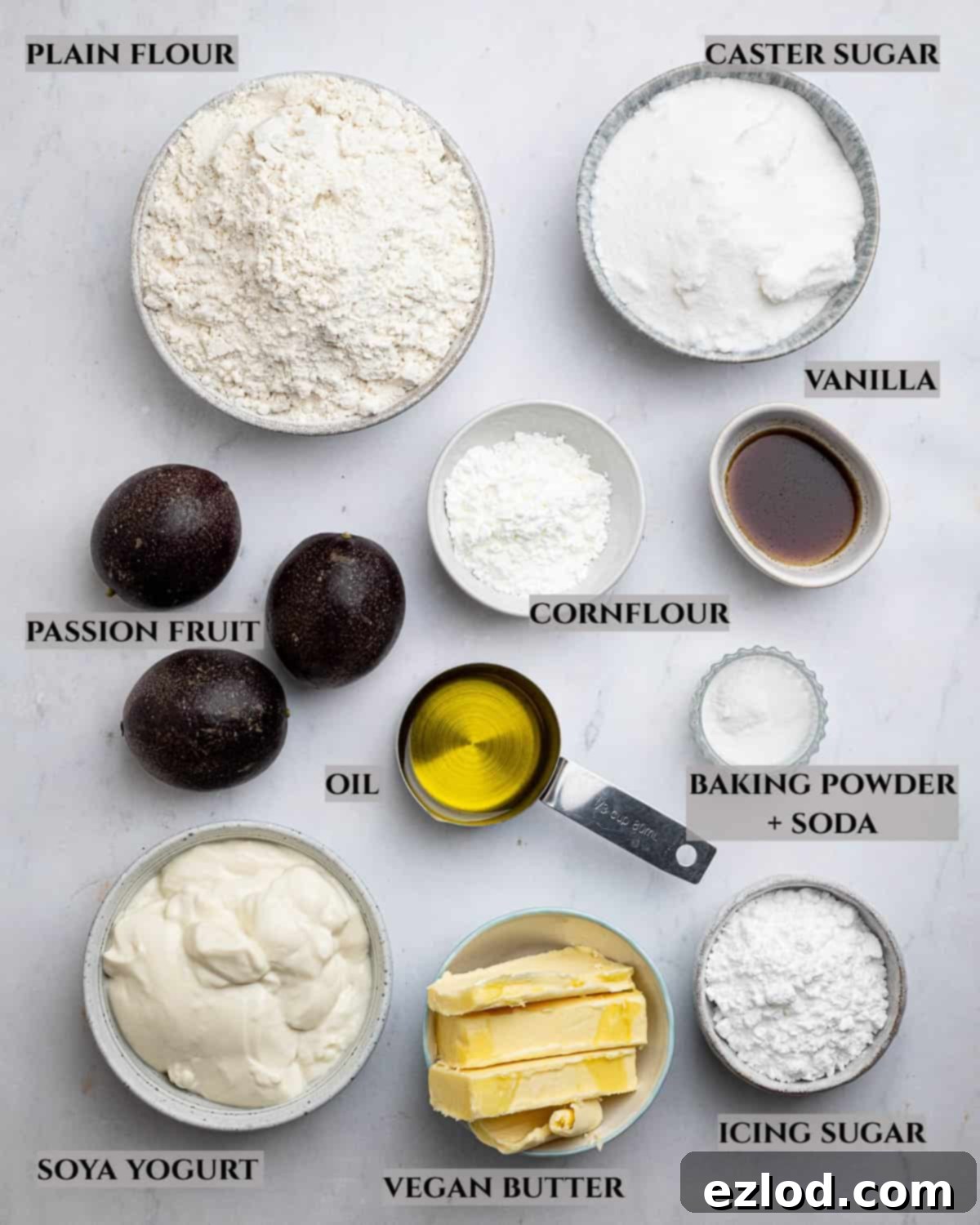
Key Ingredients for Your Vegan Passion Fruit Cake
Creating an exceptional vegan loaf cake starts with understanding the role each ingredient plays. Here’s a closer look at what you’ll need to bake this tropical delight:
- Passion Fruit: The star of the show! For the most authentic and intense flavor, I recommend using fresh passion fruits. You’ll need quite a few – typically around 11-12 medium-sized fruits – to extract the necessary amount of juice. However, to save time and effort, you can also opt for high-quality, shop-bought unsweetened seedless passion fruit puree. If you choose to go with puree, whether from a carton or frozen, always ensure it is 100% pure passion fruit with no added sugars or water. I’ve found this brand, which I order online, to be excellent. Using fresh fruit means a little more work, but the payoff in flavor is worth it!
- Oil + Vegan Butter: The secret to this cake’s incredible texture and moistness lies in using a combination of both oil and vegan butter. This dynamic duo offers the best of both worlds: the oil contributes essential moisture and a delicate crumb, while the vegan block butter adds richness, depth of flavor, and a luxurious, plush mouthfeel. For the oil, any neutral-flavored variety will work wonderfully (such as olive, sunflower, canola, or avocado oil), but avoid coconut oil as it can alter the texture and flavor. When it comes to vegan butter, always opt for a block variety rather than the spreadable kind found in tubs. Block vegan butter has a higher fat content and behaves more like dairy butter in baking, resulting in a superior crumb structure.
- Non-Dairy Yogurt: Plant-based yogurt is a fantastic secret weapon in vegan baking. In this recipe, it acts as a stellar egg replacer, contributing to the cake’s tenderness and incredible moistness. Beyond its structural role, it also adds a subtle tang that complements the passion fruit beautifully. Both soy or coconut yogurt varieties work well, but for the best results, choose a thick, unsweetened Greek-style non-dairy yogurt. Its consistency is crucial for the cake’s texture. I haven’t tested any direct substitutes for the yogurt, so sticking to this ingredient is highly recommended for success.
- Sugar: For the cake batter, fine caster sugar or granulated sugar are ideal. These sugars dissolve easily and contribute to a smooth, tender crumb. It’s important not to substitute with liquid sugars or artificial sweeteners, as these can drastically alter the cake’s structure and moisture balance. You will also need icing sugar (also known as powdered sugar or confectioners’ sugar) for the tangy passion fruit glaze.
- Baking Powder and Bicarbonate of Soda: This recipe utilizes both baking powder and bicarbonate of soda (baking soda) to achieve the perfect rise and a wonderfully light, airy texture. Baking soda reacts with acidic ingredients (like the passion fruit and yogurt), while baking powder provides an additional lift. Do not attempt to swap one for the other or omit one, as they perform different functions and you will not achieve the desired airy and well-risen result. Their precise balance is key to the cake’s success.
- Plain Flour and Cornflour: The foundation of the cake’s structure comes from regular plain (all-purpose) flour. A small addition of cornflour (cornstarch) is incorporated to tenderize the crumb, making it even softer and more delicate. If you don’t have cornflour on hand, you can substitute it with an equal weight of plain flour, but I highly recommend using cornflour if possible, as it truly enhances the cake’s texture.
- Vanilla: A touch of vanilla bean paste or high-quality vanilla extract helps to round out the tropical flavors, adding depth and warmth to the cake. Vanilla bean paste will offer the most intense and visible vanilla flecks, enhancing the overall sensory experience.
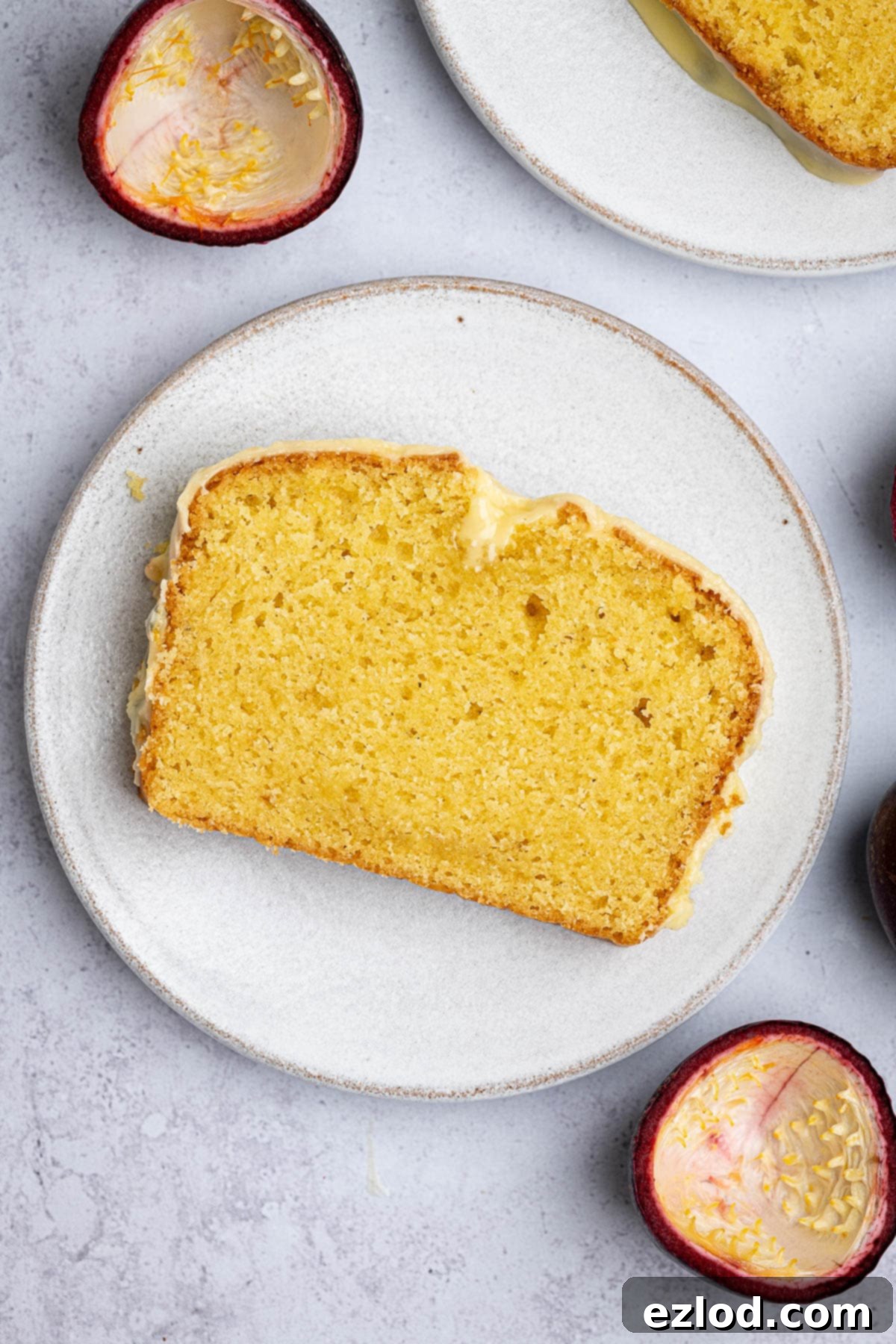
How To Bake Your Delicious Vegan Passion Fruit Cake
(For precise measurements and detailed instructions, please refer to the comprehensive recipe card located at the bottom of this page.)
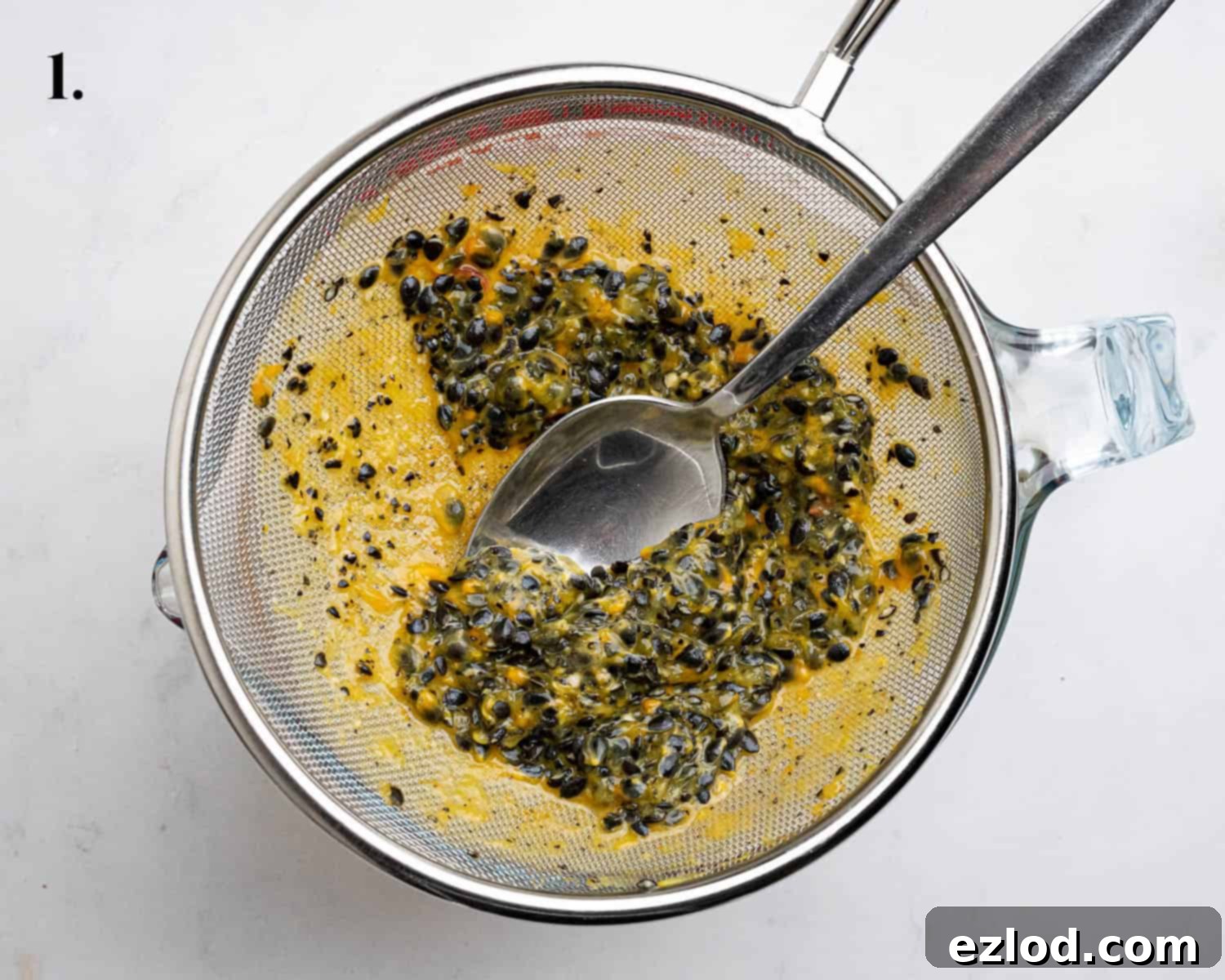
- Step 1: Preparing the Passion Fruit. If you’re using fresh passion fruits, carefully scoop out the pulp. Briefly pulse the pulp in a food processor or blender for just a few seconds – this helps to loosen the juice from the seeds without pulverizing them. Then, press the pulsed pulp through a fine-mesh sieve, using the back of a spoon to extract as much of that precious, vibrant juice as possible. This ensures a smooth, seedless juice for your cake.
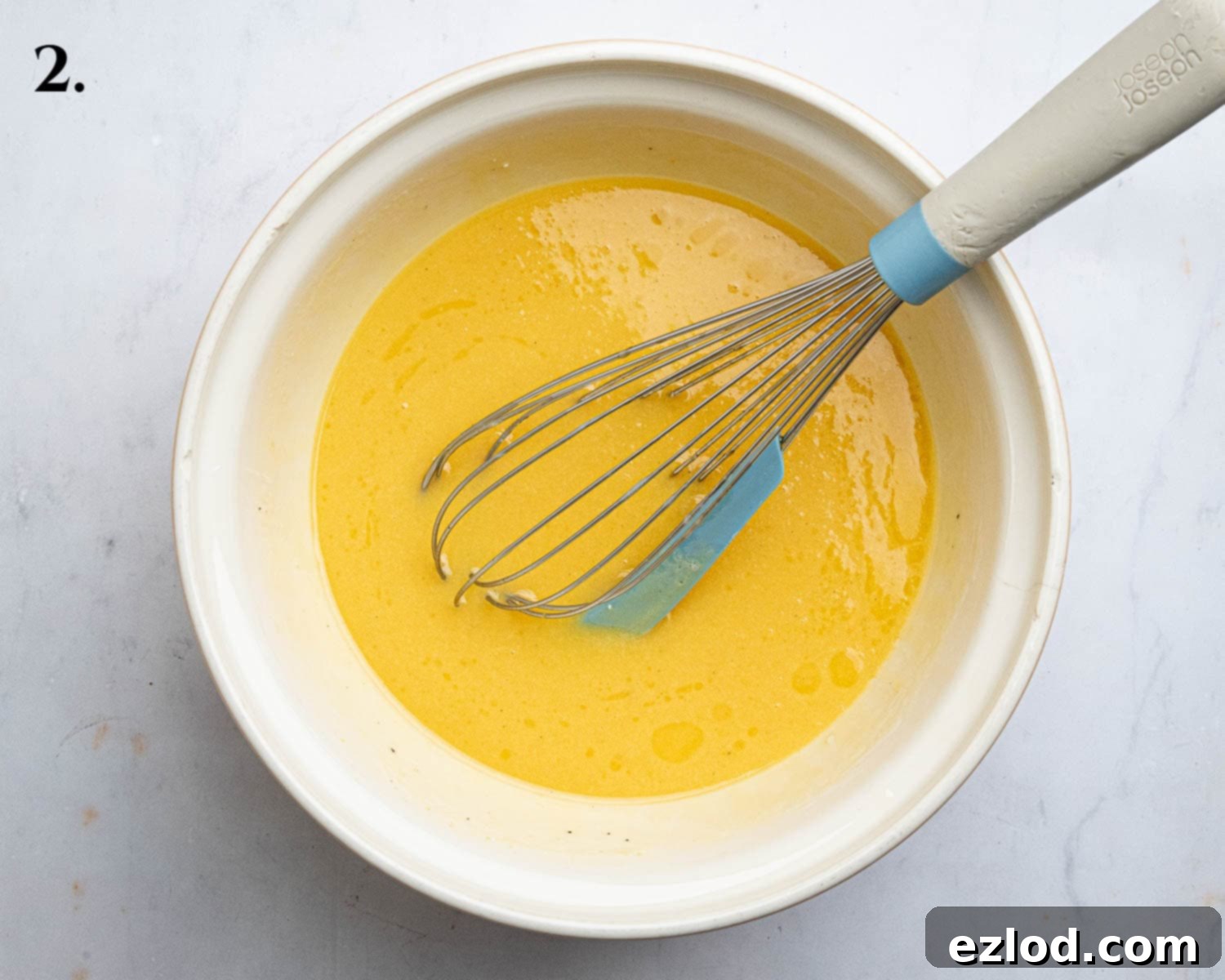
- Step 2: Combining Wet Ingredients. Measure out 120g of the strained, seedless passion fruit juice. In a large mixing bowl, combine this juice with the vegan Greek-style yogurt, granulated or caster sugar, neutral oil, melted vegan block butter, and vanilla extract or paste. Whisk all these wet ingredients together thoroughly until they are well combined and smooth.
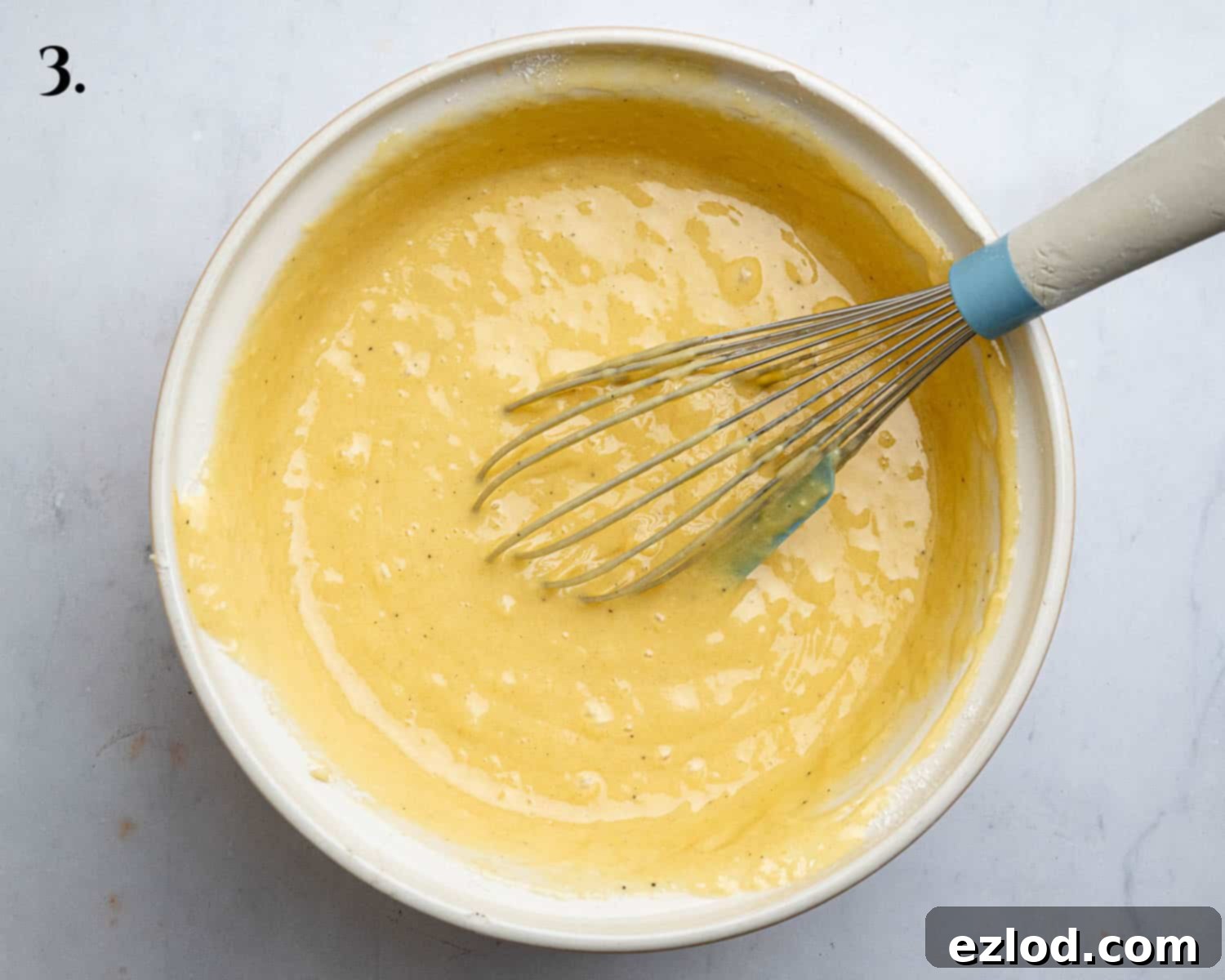
- Step 3: Incorporating Dry Ingredients. To the wet mixture, add the cornflour, baking powder, bicarbonate of soda, and salt. Whisk these in briefly, then gradually add the plain (all-purpose) flour. Continue to whisk by hand with a balloon whisk until all the dry lumps have disappeared and the batter is just combined. Be careful not to overmix, as this can lead to a tough cake.
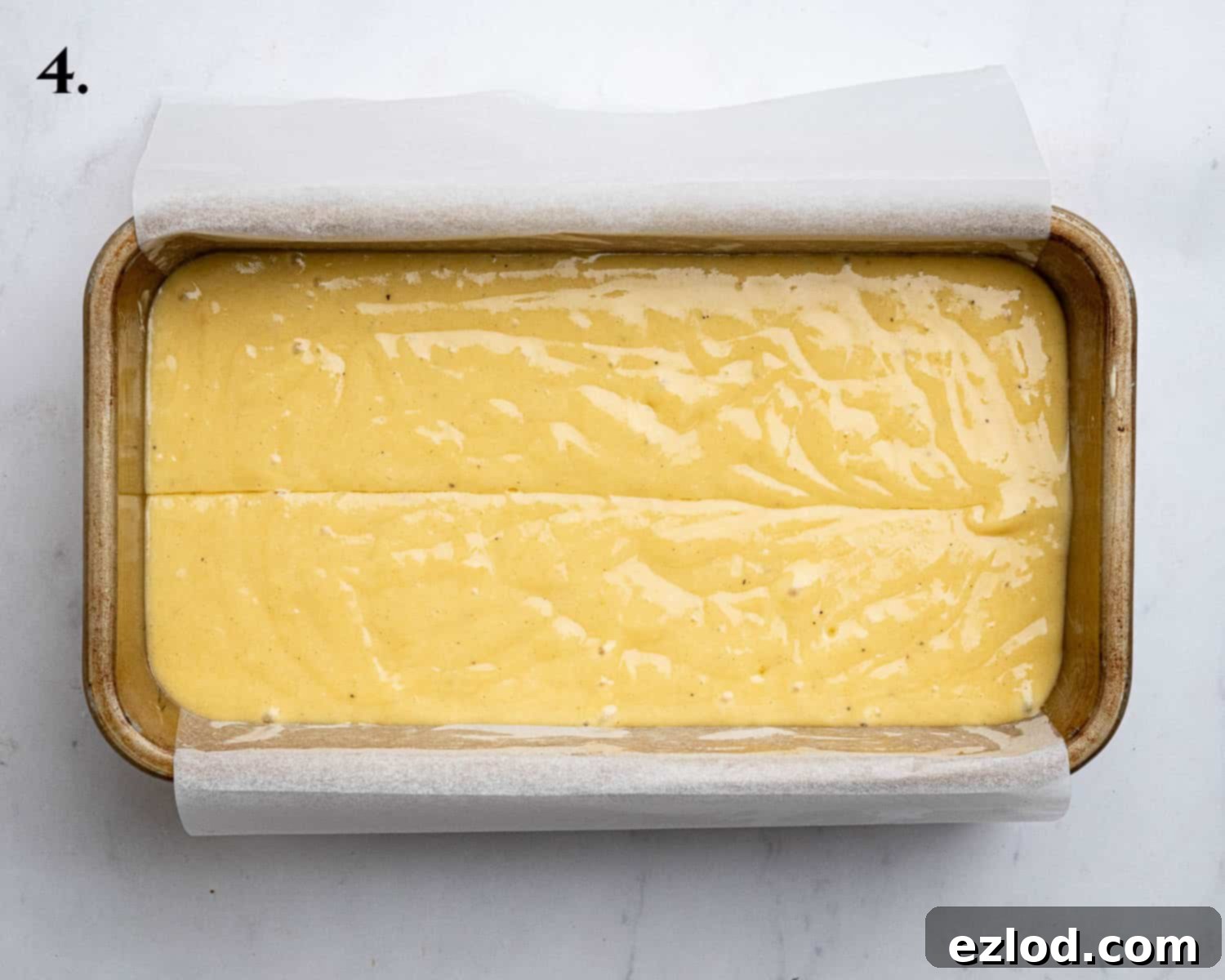
- Step 4: Preparing for Baking. Scrape the smooth batter into your prepared 2lb loaf tin, which should be greased and lined with baking parchment. Ensure the batter is spread evenly in the tin.
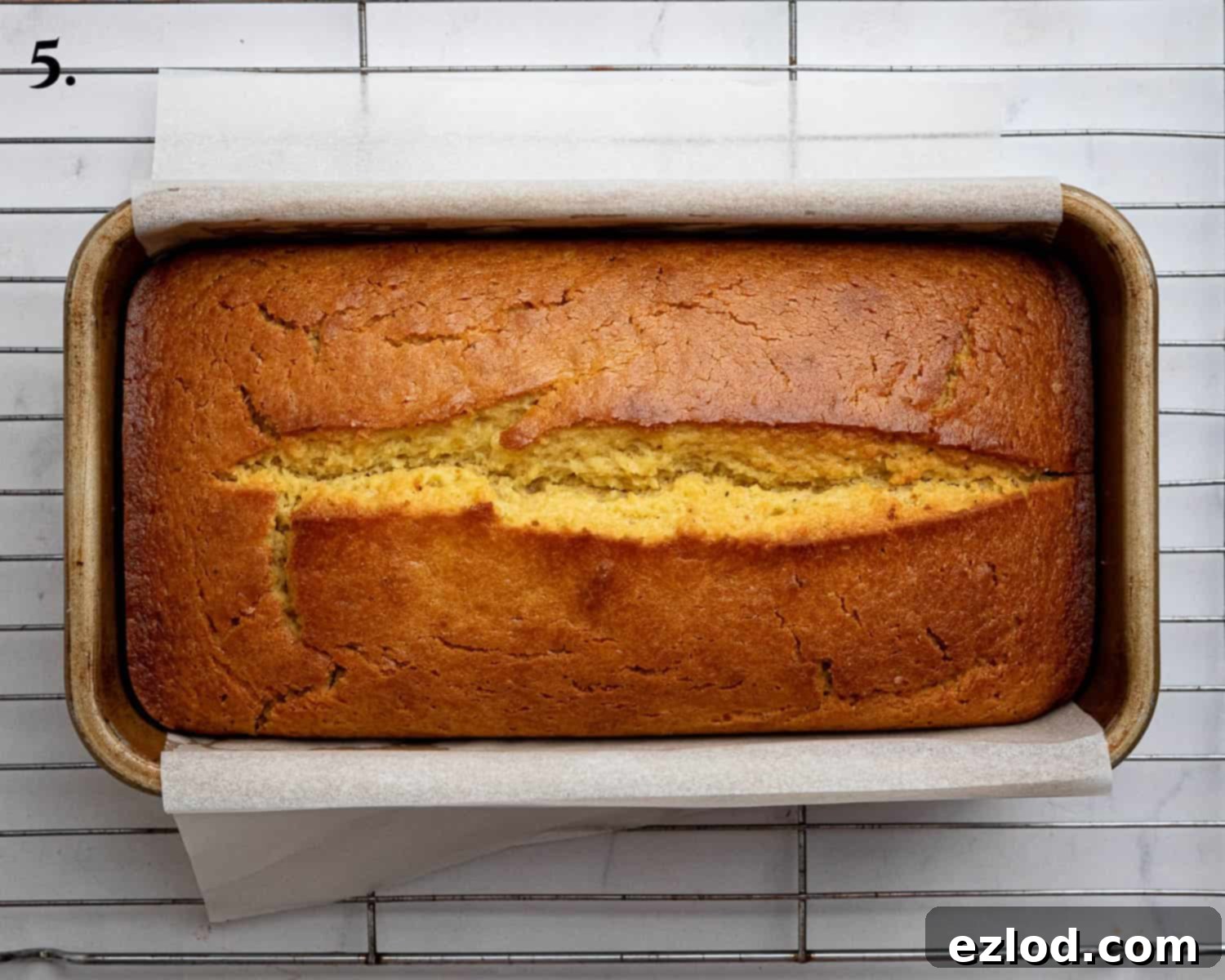
- Step 5: Baking Time. Place the loaf tin in your preheated oven and bake for approximately 60 minutes. The cake is ready when it is firm to the touch and a skewer inserted into the center comes out clean or with only a few moist crumbs attached, but no wet batter.
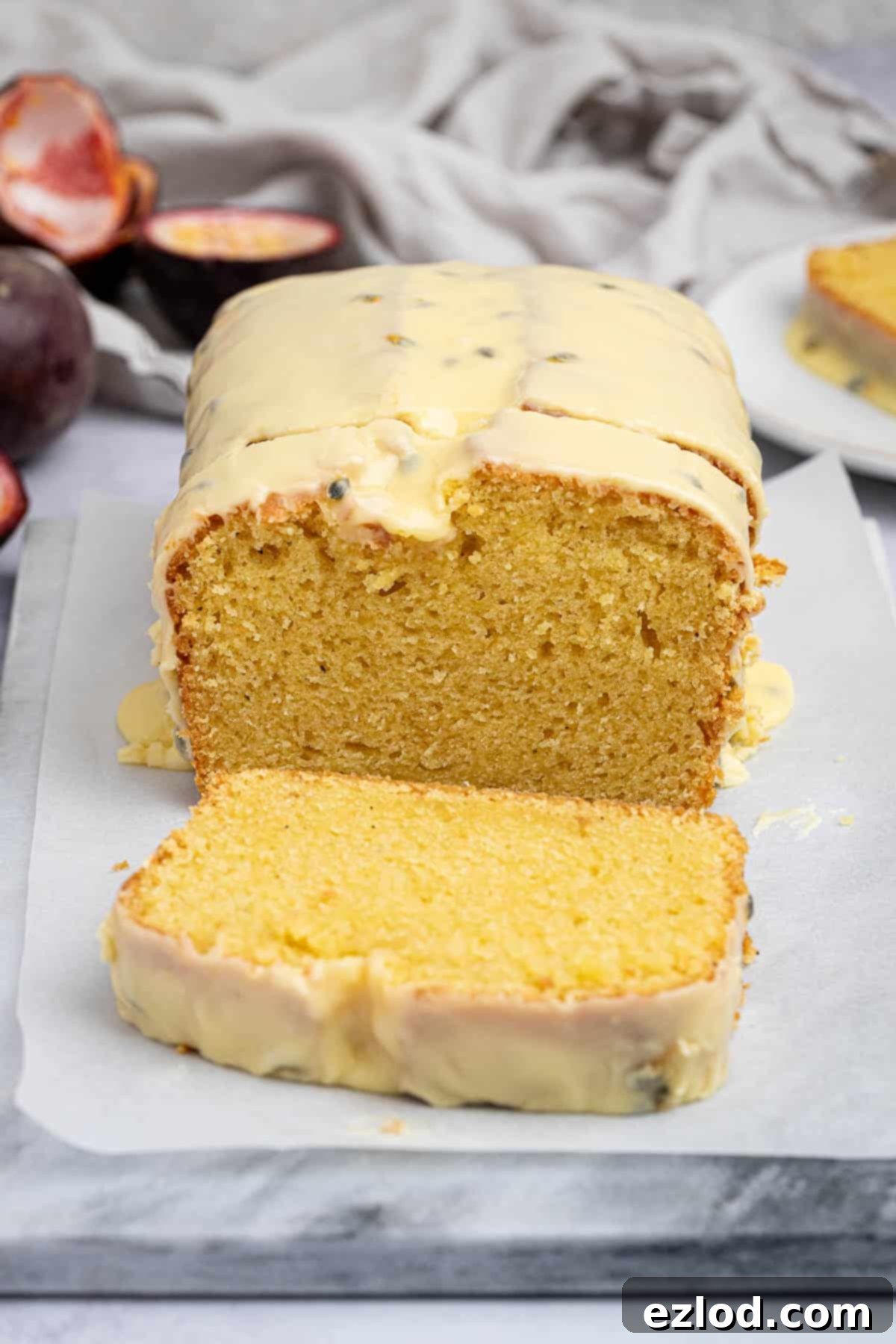
Expert Baking Tips for a Perfect Vegan Passion Fruit Loaf
Achieving a consistently perfect bake is easier with a few key strategies. Here are my top tips to ensure your vegan passion fruit cake turns out flawlessly every time:
- Embrace Your Digital Scale: All my baking recipes, including this vegan passion fruit loaf cake, are developed using metric measurements in grams. I cannot stress enough the importance of using a digital kitchen scale over volumetric cup conversions. Cups are notoriously inaccurate due to variations in how ingredients are packed or leveled. Using a scale guarantees far better, more consistent, and more professional results. As a bonus, it’s also generally easier and less messy than dealing with multiple measuring cups!
- Invest in Proper Measuring Spoons: Similarly, for tablespoon and teaspoon measurements, always use proper measuring spoons, not standard kitchen spoons. A true Tablespoon is 15ml, and a teaspoon is 5ml, and they should always be level, not heaped. This precision contributes significantly to baking success.
- Avoid Overmixing the Batter: Once you’ve added the dry ingredients to the wet, mix just until no dry lumps of flour remain. Use a balloon whisk and mix by hand rather than an electric mixer. Over-beating the batter develops the gluten in the flour too much, which can result in a dense, tough, and chewy cake rather than the desired soft and tender crumb. Gently does it!
- Achieve That Perfect Crack: For a professional-looking loaf cake with a beautiful crack down the center, dip a butter knife in a little neutral oil and run it lengthwise through the center of the batter in the loaf tin just before placing it into the oven. This creates a weak point for the cake to expand upwards, resulting in that classic, aesthetically pleasing crack.
- Confirm Doneness: The cake is perfectly baked when it feels firm to the touch in the center, and a wooden skewer or toothpick inserted into the thickest part comes out clean or with a few moist crumbs attached, but absolutely no wet batter. If it comes out wet, continue baking for a few more minutes and test again.
- Optimize Fresh Passion Fruit Extraction: When using fresh passion fruits, a quick pulse in a food processor or blender for just 5-10 seconds is incredibly helpful. This brief processing helps to separate the juice from the fibrous seeds, allowing you to extract maximum juice when you press it through a fine-mesh sieve.
- Alternative Topping Ideas: While the passion fruit glaze is delightful, if you’re looking for a different topping, consider drizzling the cooled cake with a homemade vegan passion fruit curd. It adds another layer of intense passion fruit flavor and a rich, creamy texture. You could also simply dust it with powdered sugar for a more understated look.
Frequently Asked Questions (FAQ’s)
To maintain its freshness and deliciousness, store your vegan passion fruit cake in an airtight container. It will keep beautifully at room temperature for approximately 3 days. If you need to store it for longer, or if your kitchen is particularly warm, it can be kept in the refrigerator for up to 5 days. Ensure the container is truly airtight to prevent the cake from drying out.
Absolutely! This cake freezes exceptionally well, making it perfect for meal prepping or enjoying a slice whenever a craving strikes. You can freeze it either whole or in individual slices. Before freezing, ensure the cake has cooled completely to prevent ice crystals from forming. Wrap it tightly in several layers of plastic wrap, then an additional layer of aluminum foil, to prevent freezer burn and preserve its texture and flavor. It can be stored in the freezer for up to 3 months. When you’re ready to enjoy, simply allow it to defrost gradually at room temperature.
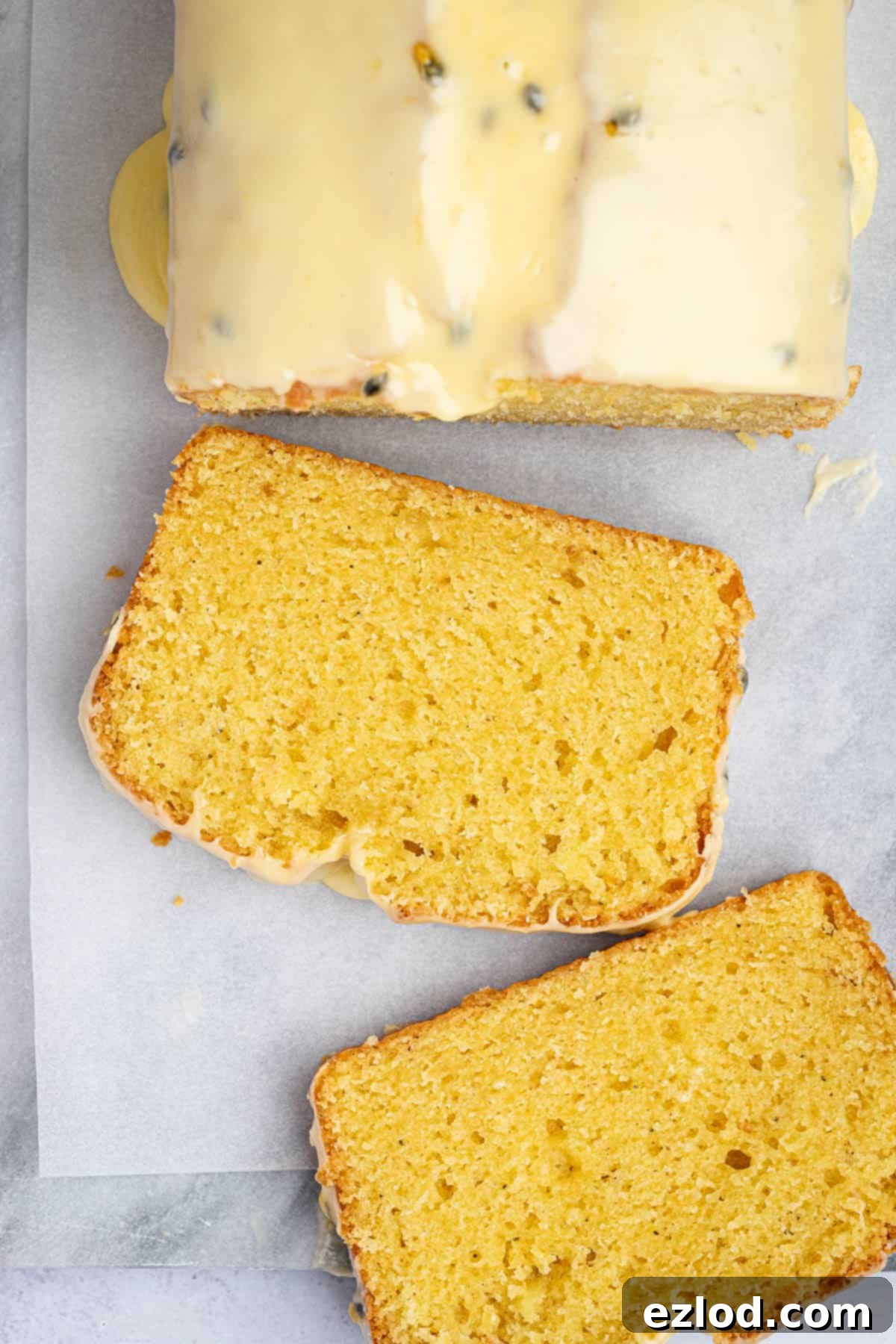
Discover More Delicious Vegan Loaf Cakes:
- Earl Grey Lemon Cake (vegan)
- Lemon And Ginger Drizzle Cake (vegan)
- Vegan Ginger Loaf Cake
- Easy Marmalade Tea Loaf (Vegan)
- Spiced Courgette Cake (Vegan)
Stay connected and never miss a recipe! Follow me on social media @ Instagram, Pinterest, and Facebook. For all the latest delicious creations delivered straight to your inbox, don’t forget to subscribe via email!
All images and content on Domestic Gothess are copyright protected. If you wish to share this recipe, please do so by utilizing the provided share buttons. Please do not screenshot, repost the full recipe, or reproduce content in its entirety. Instead, kindly include a link back to this original post for the recipe.

Vegan Passion Fruit Cake
Ingredients
Cake:
- 120 g (½ cup) seedless passion fruit puree* (see notes)
- 180 g (¾ cup) vegan Greek style yogurt
- 200 g (1 cup) caster or granulated sugar
- 55 g (¼ cup) neutral oil (olive/sunflower/canola/avocado)
- 100 g (7 Tablespoons) vegan block butter melted
- 1 Tablespoon vanilla bean paste or extract
- 20 g (2 packed Tablespoons) cornflour (cornstarch)
- 2 teaspoons baking powder
- ¼ teaspoon bicarbonate of soda (baking soda)
- ¼ teaspoon salt
- 270 g (2 ¼ cups) plain (all-purpose) flour
Glaze:
- pulp from 1 passion fruit (including seeds)
- 15 g (1 Tablespoon) vegan block butter melted
- 115 g (1 cup) icing (powdered) sugar
- a squeeze of lime/lemon juice as needed
Instructions
-
Preheat your oven to 180°C/160℃ fan/350°F/gas mark 4. Lightly grease a 2lb loaf tin, then line it thoroughly with greaseproof paper, ensuring the paper extends over the edges to create “handles” for easy removal.
-
If using fresh passion fruits, scoop out the pulp into a food processor or blender. Pulse briefly (5-10 seconds) to separate the juice from the seeds. Press the pulp through a fine mesh sieve to extract as much seedless juice as possible. Measure out 120g of this seedless passion fruit pulp. If you are slightly short of the required amount, you can top it up with a neutral-flavored non-dairy milk (like soy or almond) to reach the 120g mark.
-
In a large mixing bowl, combine the measured seedless passion fruit pulp, vegan Greek-style yogurt, caster or granulated sugar, neutral oil, melted vegan block butter, and vanilla bean paste or extract. Whisk all these wet ingredients together thoroughly until they are completely smooth and well incorporated.120 g (½ cup) seedless passion fruit puree* (see notes), 180 g (¾ cup) vegan Greek style yogurt, 200 g (1 cup) caster or granulated sugar, 55 g (¼ cup) neutral oil (olive/sunflower/canola/avocado), 100 g (7 Tablespoons) vegan block butter, 1 Tablespoon vanilla bean paste or extract
-
Add the cornflour, baking powder, bicarbonate of soda, and salt to the wet mixture and whisk gently until just combined. Next, add the plain (all-purpose) flour. Continue mixing by hand with a balloon whisk until all dry lumps disappear and the batter is uniform, being very careful not to overbeat it, which can lead to a tough cake.20 g (2 packed Tablespoons) cornflour (cornstarch), 2 teaspoons baking powder, ¼ teaspoon bicarbonate of soda (baking soda), ¼ teaspoon salt, 270 g (2 ¼ cups) plain (all-purpose) flour
-
Gently scrape the prepared cake batter into your lined 2lb loaf tin. Smooth the top with a spatula if needed. Place the tin in the preheated oven and bake for approximately 60 minutes, or until a skewer inserted into the very center of the cake comes out clean, indicating it is fully cooked through.
-
Once baked, remove the cake from the oven and let it cool in the loaf tin for 10 minutes. This allows the cake to set and firm up slightly. After 10 minutes, carefully invert the cake onto a wire rack and gently lift it out of the tin using the parchment paper handles. Leave it on the wire rack to cool completely to room temperature before glazing.
-
While the cake cools, prepare your vibrant passion fruit glaze. Sift the icing (powdered) sugar into a medium bowl to remove any lumps. Add the pulp from one whole passion fruit (including its seeds for texture and visual appeal) and the melted vegan block butter. Stir these ingredients together thoroughly until you achieve a thick, yet pourable, smooth glaze. If the glaze is too runny, add a little more icing sugar; if it’s too thick, add a tiny squeeze of fresh lime or lemon juice, or even a few drops of non-dairy milk, until the desired consistency is reached.pulp from 1 passion fruit (including seeds), 15 g (1 Tablespoon) vegan block butter, 115 g (1 cup) icing (powdered) sugar, a squeeze of lime/lemon juice as needed
-
Once the cake is completely cool, generously spoon or drizzle the prepared passion fruit glaze over the top, letting it drip enticingly down the sides. Allow the glaze to set slightly before slicing and serving. Store any leftover cake in an airtight container at room temperature to maintain its moistness.
Notes
- *To obtain 120g of seedless passion fruit pulp, you will typically need around 10-11 medium-sized fresh passion fruits. As an alternative, you can use pre-packaged passion fruit pulp (either from a carton or frozen). If using pre-made pulp, always ensure it is 100% pure passion fruit with no added sugar or water to maintain the recipe’s intended flavor balance.
- For all my baking recipes, including this one, I strongly advocate for using metric measurements with a digital kitchen scale over cup conversions. Cup measurements are inherently less precise and can lead to inconsistent results. A digital scale ensures accuracy, which is paramount in baking, and also tends to be cleaner and more efficient.
- Refer to the main blog post above for more in-depth tips, ingredient details, and helpful step-by-step photos to guide you through the baking process.
- To achieve a distinct and beautiful crack down the center of your loaf cake, dip a butter knife into a small amount of neutral oil and gently run it along the length of the batter in the tin just before placing it into the oven. This creates a guideline for the cake’s expansion.
If you’ve had the pleasure of trying this vibrant vegan passion fruit cake recipe, I would love to hear about your experience! Please take a moment to rate the recipe, leave a comment below, or share your creations on Instagram by tagging @domestic_gothess and using the hashtag #domesticgothess. Your feedback and photos brighten my day!
